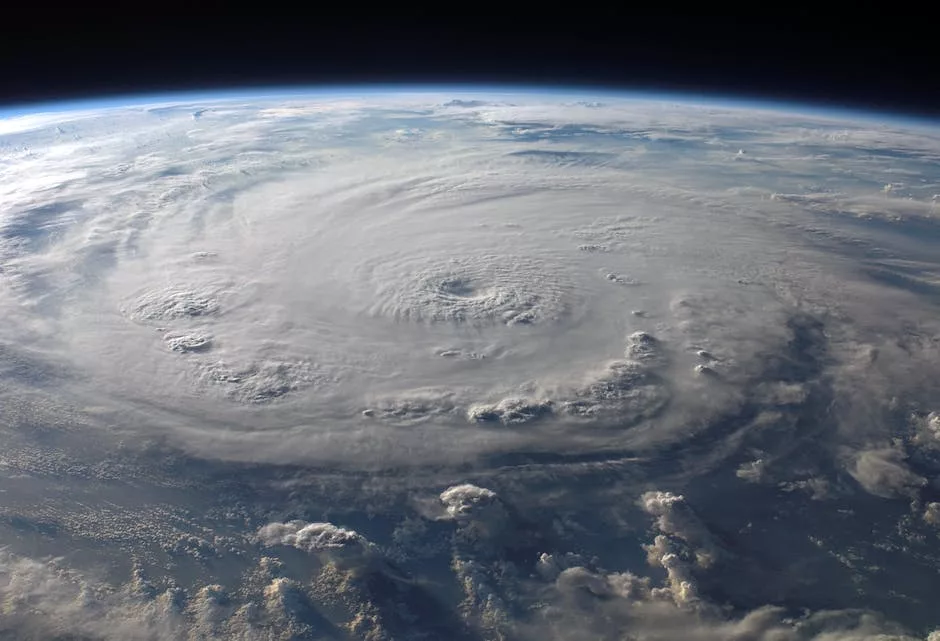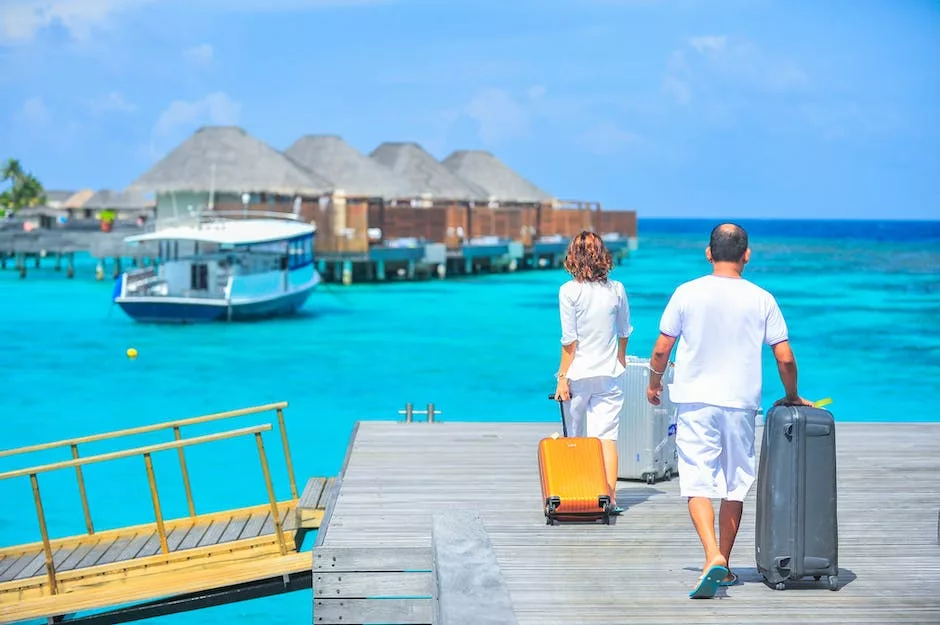Introduction
The Impact of Hurricane Ian and Other Factors on SWFL’s Tourism Industry
The tourism industry in Southwest Florida (SWFL) has been significantly affected by various factors, including the impact of Hurricane Ian. This natural disaster, along with other factors, has had a profound influence on the region’s tourism sector. In this article, we will explore the consequences of Hurricane Ian and other factors on SWFL’s tourism industry.
The Economic Consequences of Hurricane Ian on SWFL’s Tourism Industry

The Economic Consequences of Hurricane Ian on SWFL’s Tourism Industry
Oh, Hurricane Ian, you sure know how to make an entrance! With your strong winds and torrential downpours, you left quite a mark on Southwest Florida’s tourism industry. But hey, let’s not dwell on the negative. Instead, let’s take a closer look at the economic consequences of this mighty storm.
First things first, let’s talk about the immediate impact. When Hurricane Ian hit, it brought with it a wave of cancellations. Hotels, resorts, and vacation rentals were left empty as tourists fled for safer ground. And who can blame them? No one wants to spend their vacation dodging flying palm trees and wading through flooded streets. So, the tourism industry took a hit right off the bat.
But it wasn’t just the cancellations that hurt. The aftermath of the storm also had a lasting impact. The beautiful beaches that draw tourists from all over the world were left battered and bruised. The once pristine white sand was now littered with debris, making it less than ideal for sunbathing and sandcastle building. And let’s not forget about the damage to the local attractions. Many of them had to close their doors for repairs, leaving tourists with limited options for entertainment.
Now, let’s talk numbers. According to a study conducted by the Southwest Florida Tourism Association, the tourism industry lost an estimated $100 million in revenue due to Hurricane Ian. That’s a pretty hefty sum, if you ask me. And it’s not just the big hotels and resorts that suffered. The local businesses that rely on tourism, like restaurants, shops, and tour operators, also felt the pinch. With fewer tourists in town, their sales plummeted, and many were forced to lay off employees or even close their doors for good.
But it’s not all doom and gloom. The tourism industry in Southwest Florida is resilient, and it’s already bouncing back. The beaches have been cleaned up, the attractions have reopened, and tourists are starting to trickle back in. And let’s not forget about the power of marketing. The Southwest Florida Tourism Association has launched a campaign to promote the region as a destination that’s open for business. They’re highlighting the beauty of the area, the friendly locals, and the abundance of outdoor activities. And it seems to be working. Tourists are once again flocking to Southwest Florida, eager to soak up the sun and enjoy all that the region has to offer.
So, while Hurricane Ian may have left a mark on Southwest Florida’s tourism industry, it’s not the end of the world. The industry is resilient, and with a little time and effort, it will bounce back stronger than ever. And who knows, maybe next time a hurricane comes knocking, we’ll be ready with our surfboards and beach umbrellas, ready to ride the storm out in style. After all, laughter is the best medicine, right?
Strategies for Rebuilding and Revitalizing SWFL’s Tourism Sector after Hurricane Ian
The Impact of Hurricane Ian and Other Factors on SWFL’s Tourism Industry
Southwest Florida, also known as SWFL, has long been a popular destination for tourists seeking sun, sand, and relaxation. However, the tourism industry in this region has recently faced some challenges, including the devastating impact of Hurricane Ian. In this article, we will explore the strategies for rebuilding and revitalizing SWFL’s tourism sector after the havoc wreaked by Hurricane Ian, as well as other factors that have affected the industry.
First and foremost, let’s address the elephant in the room – Hurricane Ian. This powerful storm swept through SWFL, leaving a trail of destruction in its wake. Beaches were eroded, hotels were damaged, and the once vibrant tourism scene came to a screeching halt. But fear not, dear tourists, for SWFL is not one to be easily defeated.
One strategy for rebuilding the tourism sector is to focus on restoring the natural beauty of the region. SWFL is blessed with stunning beaches, lush mangroves, and diverse wildlife. By investing in beach restoration projects and promoting eco-tourism, SWFL can attract visitors who are eager to experience the unique natural wonders of the area. Plus, who wouldn’t want to see a manatee or two while sipping on a margarita?
Another strategy is to diversify the tourism offerings in SWFL. While the region is known for its beaches, there is so much more to explore. From charming downtown areas with boutique shops and art galleries to world-class golf courses and fishing charters, SWFL has something for everyone. By highlighting these lesser-known attractions, SWFL can attract a wider range of tourists and keep them coming back for more.
Of course, it’s not just Hurricane Ian that has impacted SWFL’s tourism industry. Other factors, such as the rise of vacation rentals and the increasing popularity of online booking platforms, have also played a role. While these trends may have initially posed a challenge to traditional hotels and resorts, they can also be seen as an opportunity for growth.
One strategy for revitalizing the tourism sector is to embrace the sharing economy. By partnering with vacation rental platforms and offering unique experiences, SWFL can tap into a new market of travelers who are looking for a more authentic and personalized vacation. Imagine staying in a cozy beachfront cottage and having a local guide show you the hidden gems of SWFL – it’s like having your own personal concierge!
Additionally, SWFL can leverage the power of social media to attract and engage with tourists. By creating captivating content and encouraging visitors to share their experiences online, SWFL can generate buzz and reach a wider audience. Who knows, maybe the next viral Instagram post will be of a breathtaking sunset over the Gulf of Mexico – #nofilterneeded.
In conclusion, while Hurricane Ian and other factors have undoubtedly had an impact on SWFL’s tourism industry, there is hope for a brighter future. By focusing on restoring the natural beauty of the region, diversifying tourism offerings, embracing the sharing economy, and leveraging social media, SWFL can rebuild and revitalize its tourism sector. So pack your bags, dear tourists, and get ready to experience the magic of SWFL – because the sun, sand, and laughter await you!
Exploring the Role of Climate Change in the Vulnerability of SWFL’s Tourism Industry to Hurricanes
The Impact of Hurricane Ian and Other Factors on SWFL’s Tourism Industry
Exploring the Role of Climate Change in the Vulnerability of SWFL’s Tourism Industry to Hurricanes
Ah, Southwest Florida, a paradise for tourists seeking sun, sand, and relaxation. With its pristine beaches, vibrant wildlife, and endless recreational activities, it’s no wonder that the tourism industry thrives in this region. However, recent events have raised concerns about the vulnerability of SWFL’s tourism industry to hurricanes, and the role that climate change plays in exacerbating this vulnerability.
Let’s start by talking about Hurricane Ian, the notorious storm that wreaked havoc on SWFL last year. With its powerful winds and torrential rains, Ian left a trail of destruction in its wake. Beaches were eroded, hotels were damaged, and attractions were closed for weeks. The impact on the tourism industry was significant, with many visitors canceling their trips and opting for safer destinations.
But was Hurricane Ian just an isolated incident, or is there a larger pattern at play? Climate change scientists argue that the increasing frequency and intensity of hurricanes in recent years can be attributed to global warming. Rising sea levels and warmer ocean temperatures provide the perfect breeding ground for these destructive storms. And unfortunately, SWFL is right in the firing line.
Now, I know what you’re thinking. “But isn’t Florida known for its hurricanes? Shouldn’t the tourism industry be prepared for this?” Well, yes and no. While it’s true that hurricanes are not a new phenomenon in this region, the frequency and intensity of these storms have been on the rise. And let’s face it, no amount of preparation can fully protect against the wrath of Mother Nature.
But it’s not just climate change that is making SWFL’s tourism industry vulnerable to hurricanes. There are other factors at play as well. For one, the region’s reliance on tourism as its main economic driver leaves it particularly exposed to any disruptions caused by natural disasters. When hotels are damaged, attractions are closed, and beaches are eroded, tourists have little reason to visit.
Furthermore, the perception of SWFL as a hurricane-prone area can deter potential visitors. People want to feel safe and secure when they go on vacation, and the threat of a hurricane hanging over their heads can be a major turn-off. This perception can be difficult to shake, even when the region has been hurricane-free for an extended period.
So, what can be done to mitigate the impact of hurricanes on SWFL’s tourism industry? Well, for starters, investing in infrastructure that can withstand the forces of nature is crucial. Building codes should be updated to ensure that hotels and attractions are built to withstand hurricane-force winds and flooding. Additionally, efforts should be made to restore and protect the region’s beaches, which are not only a major draw for tourists but also serve as a natural barrier against storm surges.
Education and awareness campaigns can also play a role in changing the perception of SWFL as a hurricane-prone area. By highlighting the steps taken to mitigate the impact of hurricanes and showcasing the region’s resilience, potential visitors may feel more confident in choosing SWFL as their vacation destination.
In conclusion, the vulnerability of SWFL’s tourism industry to hurricanes is a complex issue. While climate change undoubtedly plays a role in increasing the frequency and intensity of these storms, other factors such as the region’s reliance on tourism and the perception of being hurricane-prone also contribute to this vulnerability. By investing in infrastructure, restoring beaches, and changing the perception of the region, SWFL can better withstand the impact of hurricanes and continue to thrive as a tourist destination.
Conclusion
In conclusion, Hurricane Ian and other factors have had a significant impact on SWFL’s tourism industry. The hurricane caused widespread damage and destruction, leading to a decline in tourist arrivals and revenue. Additionally, factors such as the COVID-19 pandemic and economic downturn have further exacerbated the challenges faced by the tourism sector. It is crucial for SWFL to implement effective recovery strategies and invest in infrastructure improvements to attract tourists and revive the industry.



